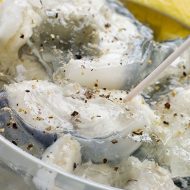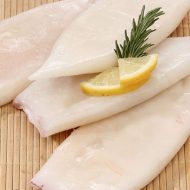Particularly popular with pasta, pizzas, and salads too. To keep the natural juices and flavour, our frozen sardines are caught fresh and frozen at sea.
Processing Sardines
The sardines reach the processing facility on ice, in a refrigerator or pre-frozen at sea. While they’re unloaded, personnel examine and assess the fish. Our personnel monitor the state of each sardine, regulate the temperature and collect chemical analysis samples. The prepared sardines are headed for the conveyor belt and washed thoroughly.
Frozen sardines are packed airtight and can be kept at -26 degrees C for 6 months.
Fresh frozen sardines are available as a whole, round fish, fillets with skin and bones, as well as boneless fillets. They’re meant to be rock-hard, with no signs of past defrosting. It should look quite shiny, without any freezer-burn marks. High-quality sardines with a fine bone structure make them very vulnerable and are treated with extreme caution.
Benefits Of Frozen Sardines
As the bones of frozen sardines are a good calcium source and the skin is a great source of omega-3 fatty acids, sardines are most healthy in their consumption. The Omega-3 fatty acids EPA and DHA are present in sardines as one of the most abundant sources.
By modifying metabolic functions, omega-3 fatty acids can facilitate weight loss. Appetite control, inflammation, and gene expression are some of these mechanisms.
Sardines are a good protein source – 36.7g of protein are is present in this fish. Sardines are also a decent vitamin B12 source. They are also an important source of choline, copper, niacin, phosphorus and vitamin D, and selenium. Selenium is an essential antioxidant that influences the development of fertility, thyroid function, and DNA. It helps to preserve the health of the blood and nervous system.
Why Buy Frozen Sardines From Us?
Frozen Fish Direct is a UK marketplace for your choice of frozen sardines and fresh frozen seafood. We know that you want to have as little trouble as possible when serving your fish dishes. We offer products for which we manage much of the supply chain from ourselves and our domestic and international suppliers. We do this so that you can remain safe, order online high-quality seafood and have it shipped to your house.
Our highly qualified fishmongers consolidate the shipments, store them in temperature-controlled containers and distribute them exactly as you want and to the best hygiene practices through our logistics provider.
Frozen Sardines Nutritional Facts
A 100-gram serving of cooked Sardines provides:
Nutrient – Amount (Grams / % RDA)
Calories 208 kcal
Carbohydrate 0 g
Fat 11.5 g
Protein 24.6 g
Vitamin B12 149 %
Vitamin D 68%
Vitamin B3 26%
Vitamin B2 13%
Vitamin E 10%
Vitamin B6 8%
Vitamin B5 6%
Vitamin B1 5%
Folate 3%
Vitamin K 3%
Vitamin A 2%
Vitamin C 0%
Minerals
Nutrient Amount (Grams / % RDA)
Selenium 75%
Phosphorus 49%
Calcium 38%
Sodium 21%
Iron 16%
Potassium 11%
Magnesium 10%
Copper 9%
Zinc 9%
Manganese 5%
FAQs
Before I cook them, do I need to gut the sardines?
You don't need to gut them if you're cooking them whole. Only rub the scales with a towel or cloth. You can eat everything if they're not too big, but even then, once they're fried, they come off the bone effortlessly.
Do the sardines have to be scaled?
Rinse the sardines under cool, gently flowing water. Sardine scales are small and not too rough, so it's best to leave a few than with overly aggressive scaling, ripping the skin and flesh.
Can you cook the sardines from frozen?
Sardines can be deliciously fried, roasted, crisped, sautéed or in a sauce with their fatty flesh. Add a bowl of cold water and rub the scales carefully with your fingers, to prepare a whole sardine for use.
How long can you keep sardines frozen?
They will hold the highest quality for around 3 months if properly preserved, but will remain safe after that point. Only for the best quality is the freezer period shown, the sardines that are constantly frozen at 0°F will remain safe.
How are you thawing frozen sardines with a vacuum seal?
Before thawing, do not cut the vacuum packing. Thawing "naked" fish under the water makes it saturated. To defrost, use only cool tap water, as this minimises the chance of bacterial development. To guarantee the best results, instantly use the defrosted fish!













